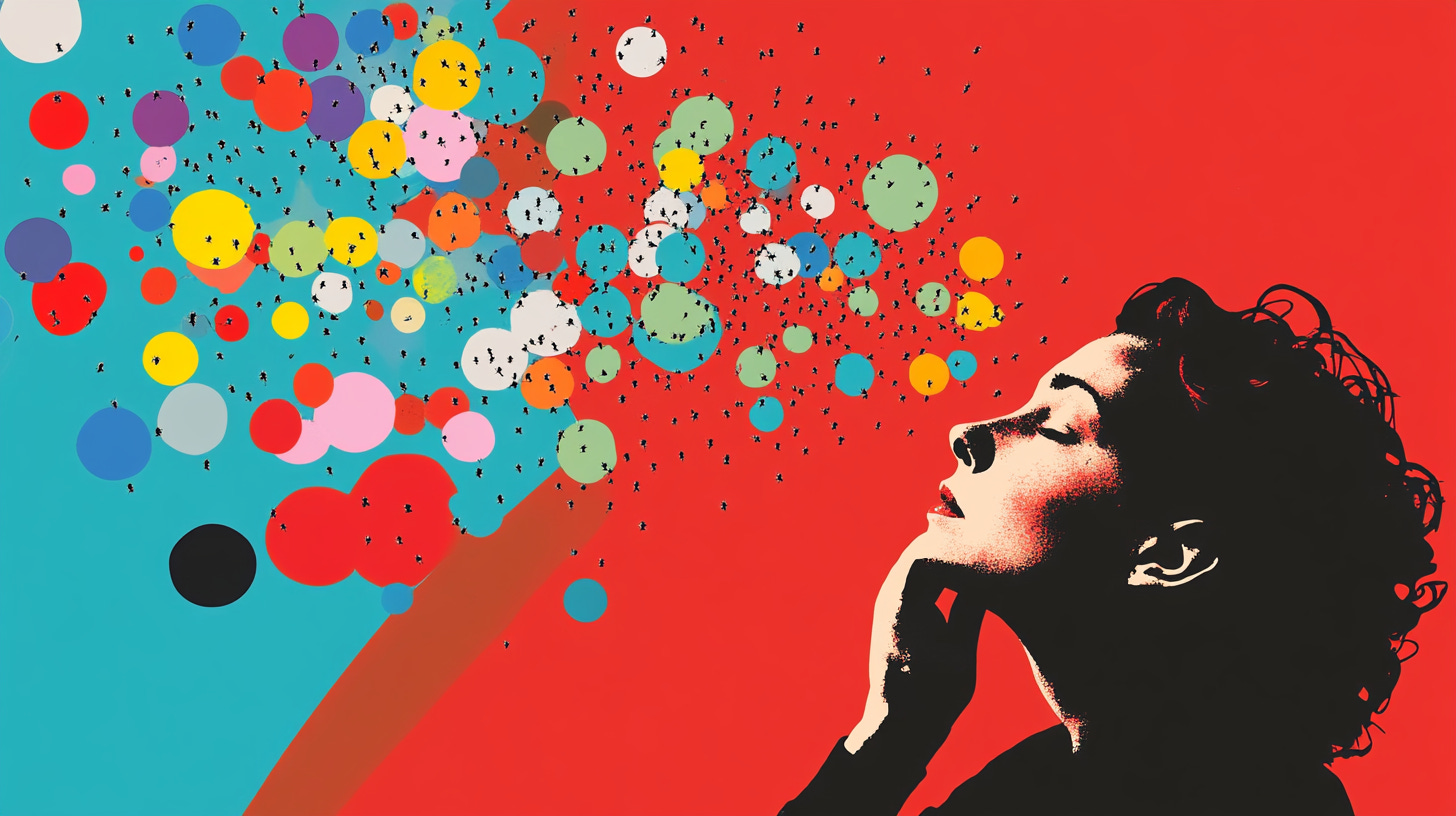Most people defend their ideas and opinions like fortresses; the truth is, you should invite the siege.
Long before you see them take action, the smartest people thrive on being wrong, not right: they assert vague theories, question long-held assumptions, welcome correction, synthesize diverse ideas, and then make bold choices.
Being wrong isn't a mistake. It's strategic.
The Best Way to Find the Right Answer is to Post the Wrong One on the Internet, and Others Will Correct You
We’ve all done it: You share something with a mistake on social media and “friends,” far and wide, quickly pounce to point it out. The urge to correct, judge, fix, and criticize fills us with passion and resolve.
But it’s not just a powerful draw on social media. The passion to hold a novel point of view is the source of great scientific breakthroughs, which emerge from those willing to question established "truths." Einstein's theories replaced Newton's not because Newton was entirely wrong, but because Einstein questioned the status quo.
An online group of gamers playing an online puzzle game called Foldit helped scientists figure out the shape of a tricky germ part that helps cause AIDS, which helped doctors find new ways to fight the sickness.
Smart people deliberately use the “post the wrong answer and have others correct it” technique. They know that the true superpower is question-posing, not answer-making. Being strategically wrong works because it harnesses four forces of human psychology.
Humans love being right. We ignore questions but can't resist correcting an error. It's an itch we have to scratch.
Conflict creates connection. When you engage others in debate, you invert the power dynamic; you place yourself in a humble, open position, and those who help you become invested in the outcome. You bond.
Formulating questions forces you to clarify your thinking.
Debate spawns learning. Each piece of new input is a stepping stone towards new truths, new understanding, and original ideas. It’s how we learn.
Clinging to certainty creates a psychological trap. Insisting on being right activates our brain's defense mechanisms, blinding us to opposing evidence. This phenomenon, known as "confirmation bias," leads to mental rigidity and cognitive stagnation. As the world evolves, certainty-seekers become trapped, defending outdated positions with complex justifications.
Like any muscle, the mind grows stronger through resistance and challenge, not through the comfortable repetition of familiar ideas.
How to Be Smart By Asking “Stupid” Questions
How can we apply this wisdom? It starts with you: Start by loosening your grip on being right. Say "What do you think?" instead of "I think." When someone corrects you, thank them. Don’t defend yourself.
Train yourself to feel excitement rather than embarrassment when receiving feedback. Think of each correction is a gift—someone else is working hard to help you.
With your own attitude in order, use these three smartness-by-wrongness tools: Mock Press Releases; Solution-Finding By Powerpoint; AI Bubble Bursting.
Mock Press Releases (MPR)
Jeff Bezos built one of the biggest companies in history through a culture of deliberate wrongness.1 2 Before Amazon developed new products, teams wrote “mock” press releases that announced their launch, even though the product or service didn’t exist yet. This mock press release approach helped Amazon develop Amazon Web Services (AWS) and the Kindle.
The MPR describes the features, benefits, pricing, and why customers love the product.
Writing Mock Press Releases forces teams to start with the end in mind—to crystallize their vision before building. More importantly, it creates something that can be critiqued and improved. Teams debate MPRs. Meetings are used to poke holes in plans, question assumptions, and discuss what could go right and wrong. The MPR is a lightning rod for feedback.
By being willing to be wrong early, Amazon got closer to being right when it matters.
Solution-Finding by PowerPoint
Another tool for strategic wrongness is what I call "Leadership by PowerPoint." This can be a structured presentation of a solution for any idea, as if you solved it. It simply asserts an answer to a problem.
Asserting an answer is a great way to seize control of vague situations. Write down the problem, the need, and your proposed solution. Then distribute it and ask for feedback.
This transforms vague concerns into concrete, critiqueable proposals. You move the conversation from "We should do this" to "Is this the right approach?"
You don't need to be right—you need to be clear. Your presentation serves as a starting point that invites refinement. Presenting ideas in a structured format makes it easier for others to identify flaws and suggest improvements.
Leaders do this. By putting forward a proposal (even if imperfect), you show initiative and commitment to progress.
AI Bubble Bursting
In the age of artificial intelligence, we have a new tool for embracing strategic wrongness: AI. When developing ideas—from business strategy to scientific research—ask ChatGPT, Perplexity, or Manus to identify flaws, contradictions, or alternative perspectives.
Unlike human colleagues who might soften criticism to spare your feelings or be limited to their scope of knowledge, AI provides feedback with unlimited access to research, writing, and thinking about what you have in mind. It doesn’t mind hurting your feelings.
The key is how you prompt AI. Don't ask, "Is my thesis correct?" Say, "Here's my idea. What are the strongest arguments against it? What evidence contradicts my position? What am I missing?" Leverage the AI's power by explicitly inviting criticism.
AI Bubble Bursting gives you input without public criticism. You can process new ideas, refine your thinking, and present a stronger version to colleagues. Working with AI is like using a sparring partner before the real boxing match.3
Be Wrong, Get Smart: Embrace Strategic Wrongness
Be bold. Be wrong. Get Smart. Frame ideas as questions, not conclusions. Write and debate mock press releases. Ask AI to tear your ideas to bits. Be strategically wrong—put forward your best thinking, not as an immutable truth, but as a starting point for refinement.
Being deliberately wrong takes humility. It requires you to care more about ideas than your ego. You must be open to ideas that diverge from your own. In a world increasingly polarized by people who cling to positions, the willingness to be wrong becomes not just a learning strategy but a competitive advantage. It says, "I value truth more than appearing right," and it makes you different from all the rest.
Smart people don't aim to be right—they aim to be corrected. And in that correction lies the path to truth.
Like this? Read my favorite Substacks:
- by
- by
- by
- by
- by
- by
- by
- by
- by
McAllister, Ian. "Applying Amazon's Working Backwards Process - for Leaders." LinkedIn, April 23, 2020. https://www.linkedin.com/pulse/applying-amazons-working-backwards-process-leaders-ian-mcallister ↩
Working Backwards: The Amazon PR/FAQ for Product Innovation. Product Strategy, May 2, 2024. https://productstrategy.co/working-backwards-the-amazon-prfaq-for-product-innovation/ ↩
The Do's & Don'ts of Using Generative AI Tools Ethically in Academia. Paperpal, December 21, 2023. https://paperpal.com/blog/academic-writing-guides/the-dos-donts-of-using-generative-ai-tools-ethically-in-academia ↩









Now we know (one more) secret to your success Mark! I love the combo of assertiveness and humility: declare a point of view and let the games begin! And thank you for reminding us of the power of an open-ended question: Andy Raskin’s famous “And we got to thinking, what if…” has opened my mind to more new possibilities than any number of ‘solutions’…
Brilliant. This is a tactic I try to do regularly and the powerpoint suggestion is good because people can critique it indirectly. Wonderful reminder.